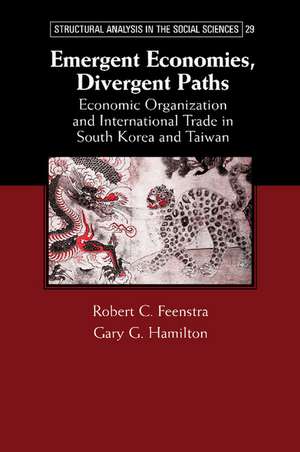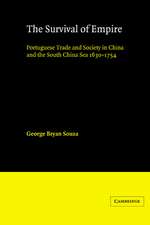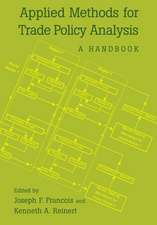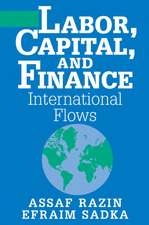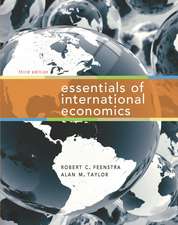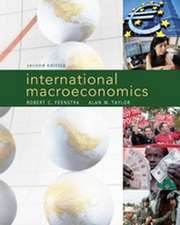Emergent Economies, Divergent Paths: Economic Organization and International Trade in South Korea and Taiwan
Autor Robert C. Feenstra, Gary G. Hamiltonen Limba Engleză Paperback – 26 mar 2014
| Toate formatele și edițiile | Preț | Express |
|---|---|---|
| Paperback (1) | 355.46 lei 43-57 zile | |
| Cambridge University Press – 26 mar 2014 | 355.46 lei 43-57 zile | |
| Hardback (1) | 642.20 lei 43-57 zile | |
| Cambridge University Press – 26 mar 2006 | 642.20 lei 43-57 zile |
Preț: 355.46 lei
Nou
Puncte Express: 533
Preț estimativ în valută:
68.08€ • 70.14$ • 57.03£
68.08€ • 70.14$ • 57.03£
Carte tipărită la comandă
Livrare economică 24 februarie-10 martie
Preluare comenzi: 021 569.72.76
Specificații
ISBN-13: 9781107634510
ISBN-10: 1107634512
Pagini: 476
Dimensiuni: 152 x 229 x 24 mm
Greutate: 0.63 kg
Editura: Cambridge University Press
Colecția Cambridge University Press
Locul publicării:New York, United States
ISBN-10: 1107634512
Pagini: 476
Dimensiuni: 152 x 229 x 24 mm
Greutate: 0.63 kg
Editura: Cambridge University Press
Colecția Cambridge University Press
Locul publicării:New York, United States
Cuprins
Acknowledgments; Introduction; Part I. Business Groups and Economic Organization: 1. The problem of economic organization; 2. Interpreting business groups in South Korea and Taiwan; 3. A model of business groups: the interaction of authority and market power in the context of competitive economic activity; 4. Economic organization in South Korea and Taiwan: a first test of the model; Part II. Emergence and Divergence of the Economies: 5. The origins of capitalist economic organization; 6. The rise of intermediary demand: a reassessment of the 'Asian miracle'; 7. Global matching, demand responsiveness, and the emergence of divergent economies; 8. Trade performance of South Korea and Taiwan: a second test of the model; Conclusions; Appendix A. Mathematical model of business groups; Appendix B. Examples of differential pricing practices of Korean groups; Appendix C. Hypothesis tests of the model; Appendix D. The role of debt in the Korean financial crisis, 1997; References; Index.
Descriere
This book, first published in 2006, offers an explanation of the development paths of post-World War II Korea and Taiwan.
